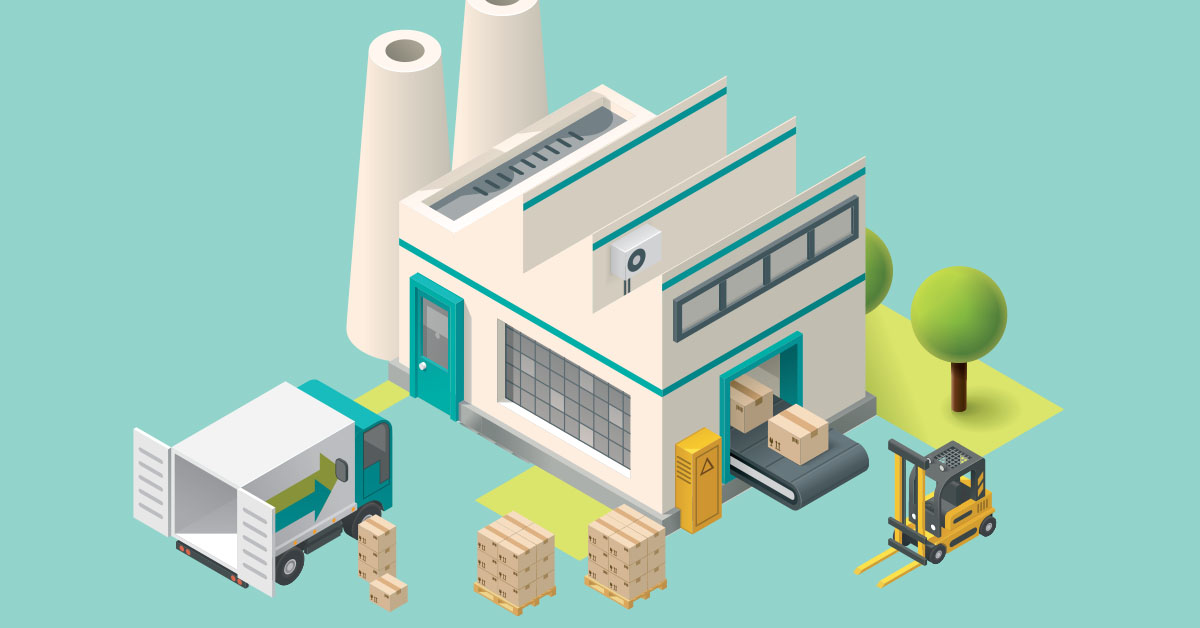For the past few years, industrial properties have been one of the stars of the commercial real estate sector as online retailers have had a seemingly unquenchable appetite for warehouse space. According to CBRE, more than 1 billion square feet of U.S. warehouse space was leased last year, the largest annual gross amount recorded since the company started tracking the metric in 1989.
The warehouse gravy train, however, appears to be coming to an end. Bloomberg reported this past May that Amazon.com, the online retailing behemoth, was looking to sublet at least 10 million square feet of warehouse space and could end up vacating up to 30 million square feet. The reason for this turnaround is that online sales have slowed as the COVID-19 pandemic has faded and the rest of the U.S. economy has opened up.
In the last decade or so, (manufacturing) productivity has been more or less the same, if not a little less efficient. That is a pretty striking change.
– Robert D. Atkinson, president, Information Technology and Innovation Foundation
Such a change is a bad sign for a business sector that has already suffered a slump in the heavy industrial and manufacturing areas, which have largely missed the pandemic-era boom that other industries have enjoyed. Thomas Rinn, a senior managing director at global IT company Accenture, recently described the international industrial sector in a Forbes article as being in “survival mode” for the past two years due to the pandemic, supply chain snafus and labor shortages.
With so much focus on e-commerce and the amazing growth for warehouses, it is easy to overlook the companies that actually manufacture goods in the U.S. This segment continues to be a major power in the economy. Manufacturing has comprised roughly 11% to 14% of the nation’s real gross domestic product since the 1940s, according to the Federal Reserve Bank of St. Louis. At the same time, employment numbers have been declining for decades. This is probably why manufacturing is often thought of as a failing sector. According to the Economic Policy Institute, manufacturing lost about 5 million jobs between 1998 and 2020.
Katie Parsons, head of the industrial property sector for JLL’s valuation advisory group, says that the heavy industrial and manufacturing sector was in the midst of its own period of change over the past two years.
“At the onset of the pandemic, these manufacturing facilities struggled to keep their doors open and operating in an efficient manner due to restrictions on occupancy,” Parsons writes in an email. “The supply chain breakdown that was magnified at this time also highlighted the pitfalls of offshore and decentralized manufacturing.”
Parsons believes that manufacturing is poised for a rebound in the U.S. due to companies shoring up their manufacturing processes. She expects to see significant growth in markets with available and inexpensive land, a business-friendly climate, and a large and growing population base. Specific industries that may lead the way, Parsons writes, include pharmaceuticals, technology, defense and automotive.
But there are headwinds as well. The industry’s most significant issue in the short term is likely to be the availability of labor.
“Trying to find workers remains one of the biggest challenges for the manufacturing sector,” Parsons writes. “According to the Bureau of Labor Statistics (BLS), job openings for manufacturing have hovered around 800,000 while quit rates in manufacturing have been above 300,000 per month since November 2021.”
Parsons expects more companies to move from higher-cost markets to lower-cost areas with a growing labor pool. That should at least help them deal with labor shortages.
Robert D. Atkinson, president of the Information Technology and Innovation Foundation (a Washington, D.C.-based think tank) also says the U.S. manufacturing sector has to deal with declining productivity.
“From World War II to about 2010, U.S. manufacturing productivity was growing faster than nonmanufacturing productivity,” Atkinson says. “Every year, manufacturing was getting more efficient than the rest of the economy, which was also improving. But in the last decade or so, productivity has been more or less the same, if not a little less efficient. That is a pretty striking change.”
Atkinson says he’s not sure of the reasons for the productivity slowdown. He adds that some of the problems for manufacturing have been masked by the explosive growth in the technology field, which from 2001 to 2010 experienced a labor productivity growth rate of nearly 80%. This skewed the numbers, making overall manufacturing look more efficient than it really was. He notes that labor productivity in manufacturing actually fell between 2010 and 2019, according to BLS data.
Atkinson is dubious that heavy industrial and manufacturing is set for a rebound, saying that as long as the U.S. dollar remains strong against other currencies, exports will be more expensive and drag on the sector. He’d like to see Congress help by making a permanent provision in the Tax Cuts and Jobs Act of 2017 that permits full expensing of investments in short-lived assets such as machinery and other equipment. The policy will begin phasing out this year.
“This was a big deal,” Atkinson says of the law. “This act really did lead to an increase in capital investment. If Congress doesn’t renew this act, I think that it will be another headwind against U.S. manufacturing.” ●






